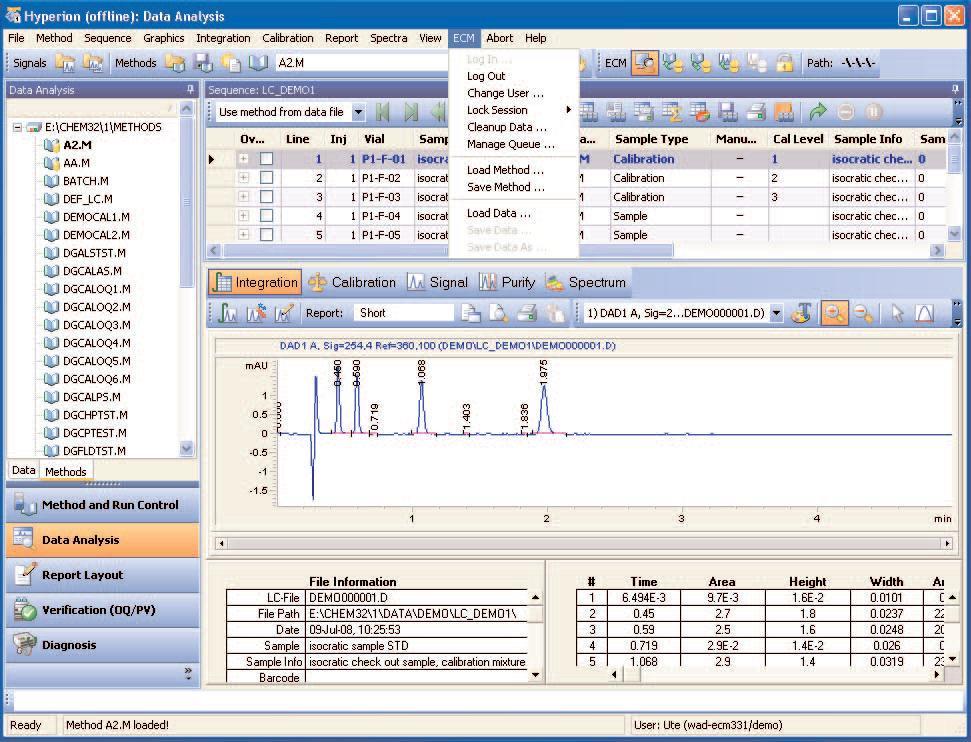You can open a COPY of anyone of these with Notepad to learn more about the macro language. DO NOT OPEN a.MAC file in hpchemmsexe. First make a copy of the file into a temp directory and then open the copy. If you have an Agilent ChemStation, the directory may be msdchemmsexe. You can open a COPY of anyone of these with Notepad to learn more about the macro language. DO NOT OPEN a.MAC file in hpchem msexe. First make a copy of the file into a temp directory and then open the copy. If you have an Agilent ChemStation, the directory may be msdchem msexe. Macro Programming Guide for RC.NET Drivers Resource Items - the door to the driver's data RC.NET provides a functionality called Resource Items, which enables RapidControl.NET drivers to expose driver specific data structures and functions to the data systems. Resource items are accessible in the ChemStation via CP commands and functions.

I am currently working as an analyst using an Agilent GC-MS.
I was wondering how I could learn how to write macros for automating some of the work in terms of compiling and organizing data in different formats. Are there ways I can learn this stuff for free? Can this knowledge be applied elsewhere, and is it a good/lucrative skill to have?
There is a lot of doom and gloom around the chemistry field, and I thought I would hit two birds with one stone - make my work more efficient and improve some processes, as well as expand my skill-set.
Agilent Chemstation Macros 1
Agilent Chemstation Macros For Mac
- Support for both MassHunter Data Analysis and MSD ChemStation Data Analysis.
- MassHunter GC/MS Acquisition: Unified GC/MS acquisition for your Agilent 5977 and 5975 Series GC/MSD, 7000 Series GC/Triple Quad, 7200 GC/Q-TOF, and Agilent 7980 series GC. Supports the MassHunter workflow for all instruments and the classic MSD ChemStation workflows for your GCMSD and GC only operation.
- MSD ChemStation Data Analysis: Supports your existing MSD Productivity ChemStation SOP’s, methods, macros, and reports. Coupled with GC/MS Acquisition, provides the latest iteration of MSD ChemStation, with all the capabilities and features you expect from your Agilent GC/MSD, including DRS.
- MassHunter Quantitative Analysis: Advanced quantitation through features such as batch-at a glance, compounds-at-a-glance, and dynamically linked result review and reprocessing. Using automated quality checking and outlier flagging, plus parameter-less integrators with built-in peak validation capability let you focus exclusively on problem peaks and minimize manual reintegration.
- MassHunter Qualitative Analysis: Advanced data mining and processing tools, such as integrated chromatographic deconvolution, let you rapidly and accurately find all detectable compounds in your samples and easily confirm targets or identify unknowns through spectral searching with the NIST MS Spectral Library or Agilent’s Retention Time Locked (RTL) Databases for specific applications.
- MassHunter Compliance: Audit trail and Data security Tools to support the operation under regulated environments such as 21CFR11. Use OpenLAB ECM for archival of Quantitative Analysis batch data and results with integrated export capabilities.
- Migration tools such as Quantitative Method translator and Data Translators for MSD ChemStation, MS Workstation and AIA data files provide compatibility with existing Agilent GC/MS systems.
- Available as English, Japanese, and Simplified Chinese language versions based on the installed Operating System language.